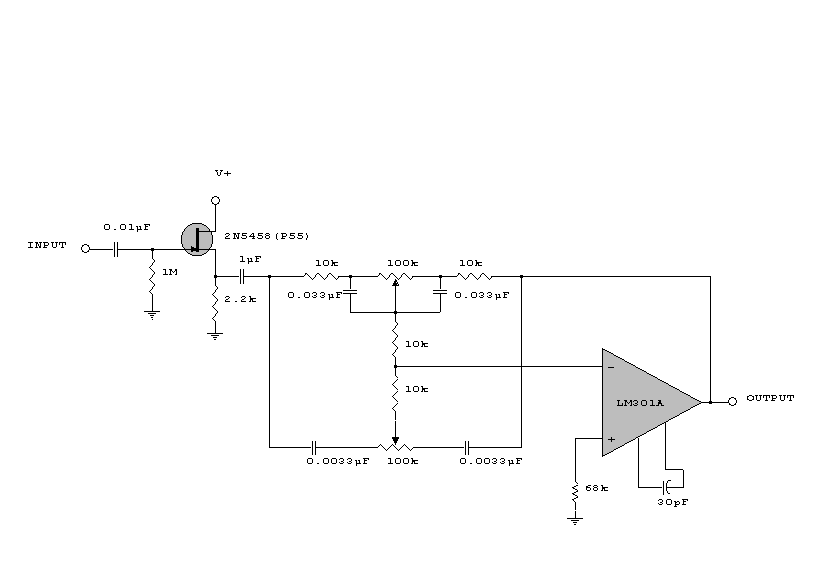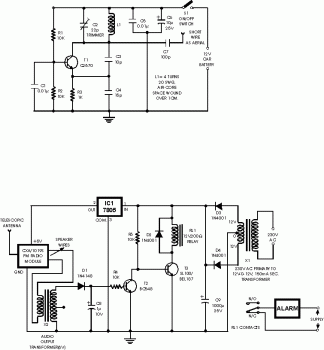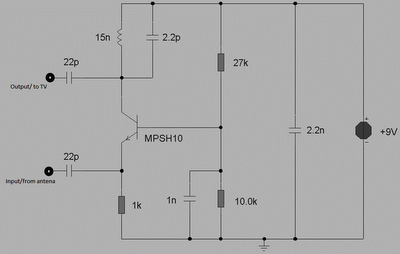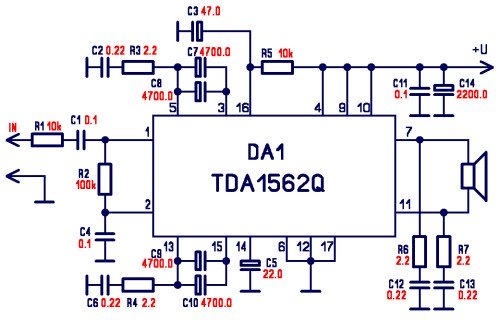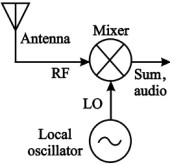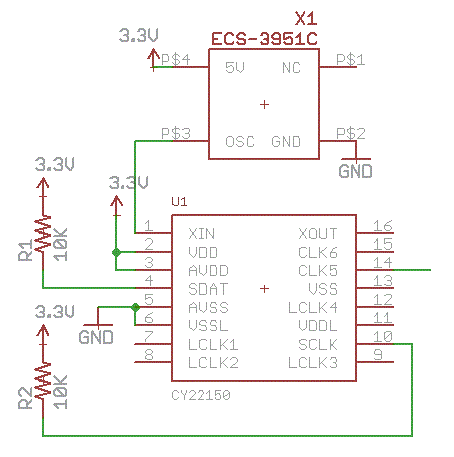
5 WAY AC FLASHER CIRCUIT DIAGRAM
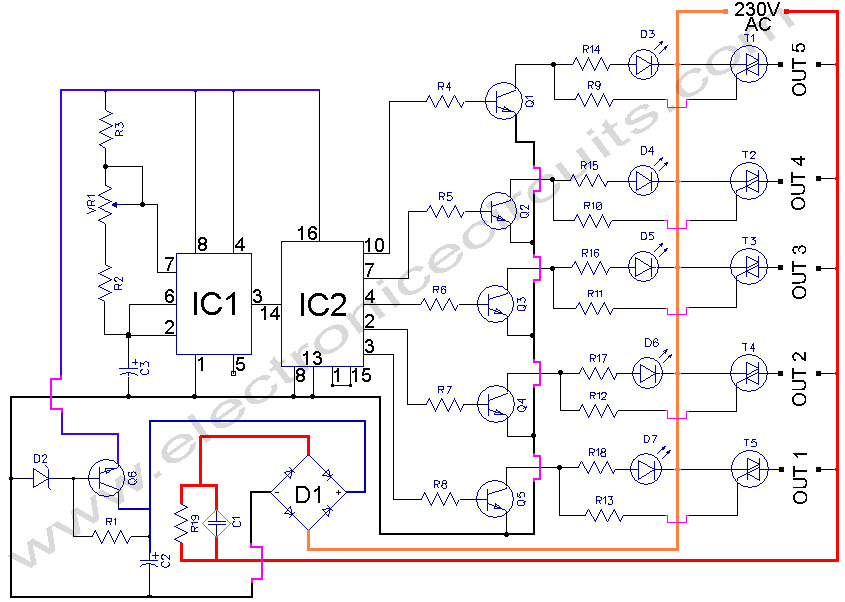
5 WAY AC FLASHER. These types of circuits are commonly used in various ceremonies such as the Wesak festival, Christmas, and weddings. This 5 WAY AC FLASHER circuit.
The 5 Way AC Flasher circuit is designed to produce a sequential lighting effect by controlling multiple light sources through alternating current (AC). This circuit typically employs a combination of relays or solid-state devices, such as transistors or triacs, to achieve the desired flashing pattern.
The circuit operates by utilizing a timer or a microcontroller to generate a control signal that activates the relays in a specific sequence. Each relay corresponds to a light source, and by turning them on and off in succession, the circuit creates an engaging visual display. The timing of the flashes can be adjusted to suit the occasion, allowing for flexibility in design.
For implementation, the circuit may include components such as resistors, capacitors, and diodes to manage the flow of current and protect sensitive components. The use of an AC power source is essential, as it allows for the operation of standard incandescent or LED bulbs, which are commonly used in decorative lighting.
In summary, the 5 Way AC Flasher circuit is ideal for festive occasions, providing a dynamic lighting experience that enhances the atmosphere of celebrations. Proper design and component selection are crucial for ensuring reliability and safety in its operation.5 WAY AC FLASHER We use these types of circuits in most ceremonies (wesak festival, christmas, wedding, ). This 5 WAY AC FLASHER circuit.. 🔗 External reference
The 5 Way AC Flasher circuit is designed to produce a sequential lighting effect by controlling multiple light sources through alternating current (AC). This circuit typically employs a combination of relays or solid-state devices, such as transistors or triacs, to achieve the desired flashing pattern.
The circuit operates by utilizing a timer or a microcontroller to generate a control signal that activates the relays in a specific sequence. Each relay corresponds to a light source, and by turning them on and off in succession, the circuit creates an engaging visual display. The timing of the flashes can be adjusted to suit the occasion, allowing for flexibility in design.
For implementation, the circuit may include components such as resistors, capacitors, and diodes to manage the flow of current and protect sensitive components. The use of an AC power source is essential, as it allows for the operation of standard incandescent or LED bulbs, which are commonly used in decorative lighting.
In summary, the 5 Way AC Flasher circuit is ideal for festive occasions, providing a dynamic lighting experience that enhances the atmosphere of celebrations. Proper design and component selection are crucial for ensuring reliability and safety in its operation.5 WAY AC FLASHER We use these types of circuits in most ceremonies (wesak festival, christmas, wedding, ). This 5 WAY AC FLASHER circuit.. 🔗 External reference
Warning: include(partials/cookie-banner.php): Failed to open stream: Permission denied in /var/www/html/nextgr/view-circuit.php on line 713
Warning: include(): Failed opening 'partials/cookie-banner.php' for inclusion (include_path='.:/usr/share/php') in /var/www/html/nextgr/view-circuit.php on line 713
